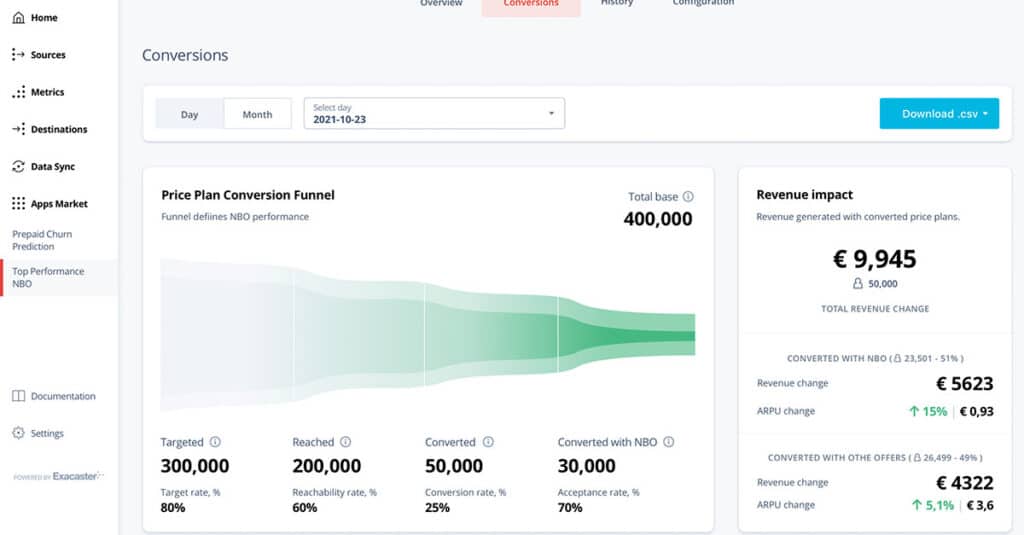For telecommunications companies, the Covid-19 pandemic presented a wide range of challenges and opportunities unlike anything seen before. Each region faced unique challenges and scored new victories.
 In this FORBES article, Sarunas Chomentauskas the CEO of Exacaster reviews a few of the latest trends to show how telcos were impacted by almost complete and instant digitization of customer interaction. This has supercharged the digital transformation in sales and marketing and has positioned telcos to compete in the years to come.
In this FORBES article, Sarunas Chomentauskas the CEO of Exacaster reviews a few of the latest trends to show how telcos were impacted by almost complete and instant digitization of customer interaction. This has supercharged the digital transformation in sales and marketing and has positioned telcos to compete in the years to come.
Facing A New Reality
When the pandemic hit in early 2020, the world was caught off guard. From meetings and shopping, from education to office work, everything moved online.
In many markets, the demand for broadband skyrocketed with the scramble to set up home offices. In the U.K., private telco services suppliers saw a significant uptake in business from public services and large organizations transferring to remote work. However, in the UAE, where many customers are expatriates, the situation was the opposite — churn increased as many people suddenly headed home.
Digitizing Marketing And Sales
During the crisis, many telco brands were forced to make dramatic adjustments to their marketing and sales tactics. What was physical had to become digital — ASAP! Before the pandemic, SIM cards were almost exclusively bought at physical stores across many developing markets. In India, when home delivery became the only option, some telco companies raced to launch home delivery services. Also in India, online telco payments and recharges were historically a tiny percentage of overall sales. When physical stores either closed or saw no foot traffic, online recharges spiked, and companies had to sell online fast, ready or not.
Telcos that already had digital sales up and running raced to exploit the new opportunities. AIS, a Thai telco, experimented with bundling non-traditional telco products such as gaming, pharmacy, insurance and other services with its traditional offerings. Now, some telcos see themselves moving past communications into the realm of being a “digital life services” provider.
The Power Of Personalization
The rise of digital channels during the crisis prepared the ground to advance to the next stage in areas such as personalization efforts, for example. Telcos with well-established digital channels had a clear head start and raced to scale their personalization efforts. In the EU, my company has seen telco brands launch hyper-personalized, contextually relevant offerings and achieve offer acceptance rate that are close to the results of media tech giants — for example, Netflix, where approximately 75% of viewer activity is based on AI suggestions. Offer personalization works elsewhere, too. In Cambodia, a big telco player observed that by pushing personalization further, offer stickiness improves.
As the telco digital sales and marketing footprint expands, responding with evermore tailored product offerings in digital channels is a strategy that should continue to pay dividends. The challenge remains to figure out what products and services should even be in the portfolio. One emerging approach is to rely on a better understanding of customer personas, supported by instant feedback from sales agents and customers, and apply responsive adaptation using AI techniques like reinforcement learning.
Measuring Customer Experience Is Key
To gauge digital customer experience and tease out the insights on what the customer really wants, telcos have embraced techniques like A/B testing down to the level of comparing small copy-writing variations. Telcos have traditionally used surveys like net promoter score to measure customer satisfaction.
In more advanced markets — such as Scandinavia — telcos have started to use digital journey data and tags to help capture quantitative experience data. Purchase flows and drop-off rates help understand the customers, and the data is continuously looped back to improve the offering. The key technology enabling this at scale is the use of customer data platforms, which can simplify this effort immensely.
For example, switching to highly granular customer experience measurement metrics will reveal which price plan, app and service has more engagement, and this is used to drive product development. By focusing on the more engaging products, telcos can drive revenue growth faster. Finally, the digital flywheel is spinning, and the insights are pouring in — what an exciting time to be working in this industry.
The original article was published in the FORBES Technology Council portal, link.





